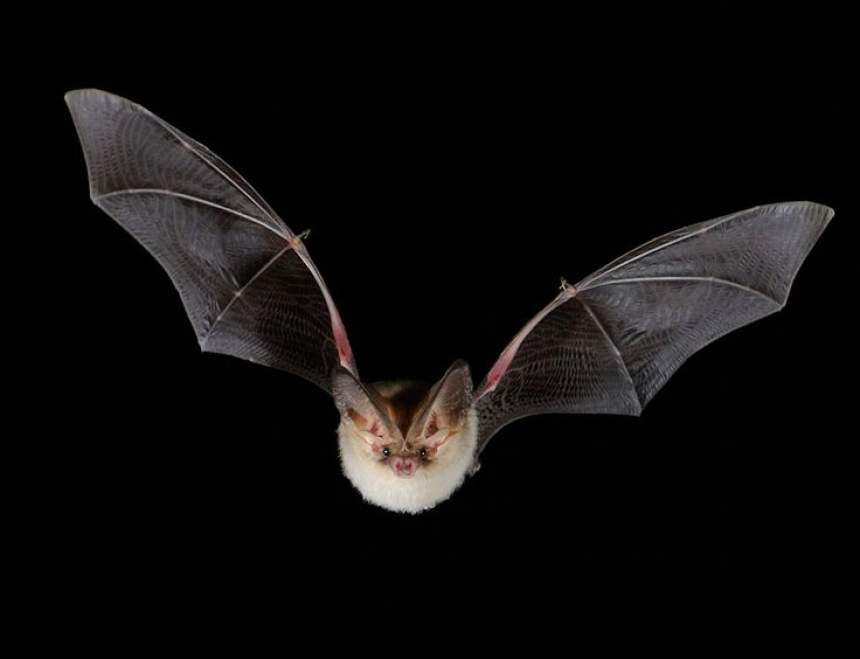There is a popular belief that bats are blind, due to their enviable ability to move, through echolocation, which allows them to have perfect orientation even at night. However, the answer to the question are bats blind? The sight of these winged mammals is different from that of humans, and they have other abilities that allow them to survive very efficiently.
Want to know how bats see? In this article, we will talk in-depth about your vision and the incredible capabilities of these animals.
Characteristics of bats
There are over a thousand species of bats in the world, all with unique characteristics. However, these species share certain attributes, such as their size, which can vary between 30 and 35 centimeters in length, and their weight, which in general does not exceed 100 grams.
Recommended Reading: Cats With Down Syndrome, Myth Or Reality?
However, there are some exceptions, such as the Filipino golden bat (Acerodon jubatus), which can reach 1.5 meters in length, and the flying fox (Pteropus giganteus), which lives in Asia and Oceania and can reach almost 2 meters wingspan.
The bats’ bodies are covered with a short coat that helps them withstand low temperatures. In addition, the front fingers of these animals are attached to a very thin membrane that allows them to fly easily.
Feeding varies from species to species. Some types of bats eat only fruit, while others prefer insects, small amphibians, mammals, birds, and, some, feed on blood.
Where do bats like to stay?
The bats live anywhere except in areas where temperatures are very low. The most common is to find them in tropical and temperate environments, where they settle in trees and caves, although they also take refuge in the cracks in the walls and in hollow trunks.
How do bats see?
Bats have one of nature’s most impressive communication systems. They have a capacity called echolocation, which allows them to view different objects thanks to low-frequency sounds. The mechanism of echolocation is complex. What is observed is that bats are able to differentiate between input and output signals. As a result, they send and receive information simultaneously, as when a person hears his own voice through an echo.
How do bats see? To a large extent, through this echolocation system, which is only possible thanks to several anatomical adaptations located in the ears and larynx, in addition to the extraordinary spatial orientation they have. The animal emits an ultrasound that originates in the larynx and is expelled through the nose or snout. The ears then capture the sound waves that bounce on the surrounding objects and, thus, the bat orientates itself.
You May Like: Boy Cat Names; Find the Perfect Male Kitten Name
There are several types of echolocation, but bats use high cycle echolocation, it allows obtaining information about the movement and location of prey. They emit this sound continuously while listening to the frequency of the echo they receive.
Despite this great ability, there are insects that have developed adaptations that make it difficult for predators to locate them since they are even able to cancel ultrasound and not produce echoes. Others are able to generate their own ultrasound to confuse these flying mammals.
Are bats blind?
Despite the stories and myths about bats and their blindness, you should know that these mammals are not blind. On the contrary, they are able to see even better than other mammals, although they do not exceed the ability of humans to see.
However, they are the only mammals capable of seeing polarized sunlight and using it for their own orientation. In addition, the sight of these animals allows them to fly long distances and orient themselves, since it is impossible to use echolocation for this purpose, so much so that they only use it for short distances in the dark.

In the past, it was believed that bats’ eyes only have rods, which are photoreceptor cells that allow them to see in the dark. Today it is already known that, despite the small size of their eyes, they also have cones, which shows that they have the ability to see during the day. Still, this does not detract from your nightlife lifestyle, as bats are sensitive to changes in light levels.
Have you ever heard the expression “blind as a bat”? Well, now you know that she is wrong because bats are not blind and depend on both their eyes and echolocation to orient themselves and understand what is going on around them.
Bats that feed on blood
Historically, bats have been associated with legends of terror and suspense. Many people believe that all species of the mammal feed on blood, which is not true. In Brazil, of the 178 known species, only three feed on blood.
These species that need blood to survive are popularly known as vampire bats common vampire bat (Desmodus rotundus), white-winged vampire bat (Diaemus young), and hairy-legged vampire bat (Diphylla ecaudata).
The targets of bats are usually cattle, pigs, horses and birds. The man is not considered a natural prey for vampire bats, but attacks are reported mainly in rural areas. Another common concern about bats is associated with the fact that they are rabies transmitters – but it is worth mentioning that any infected mammal can transmit the disease and not just bats.
Also Read: 900+ Best Bird Names for Budgies, Parrots, Cockatoos and More
Bats also play an important role in maintaining and balancing ecosystems as they mostly feed on fruits and insects. This makes them important allies in the fight against urban and agricultural pests. As many also feed on nectar and pollen, they help pollinate several species of flowers, a function quite similar to that of bees and birds.
And from the saliva of these flying mammals, new studies and drugs have emerged as they are rich in anticoagulant substances. Some researchers believe that bats can also help in the development of drugs to treat thrombosis and other health problems in people who have suffered strokes.








